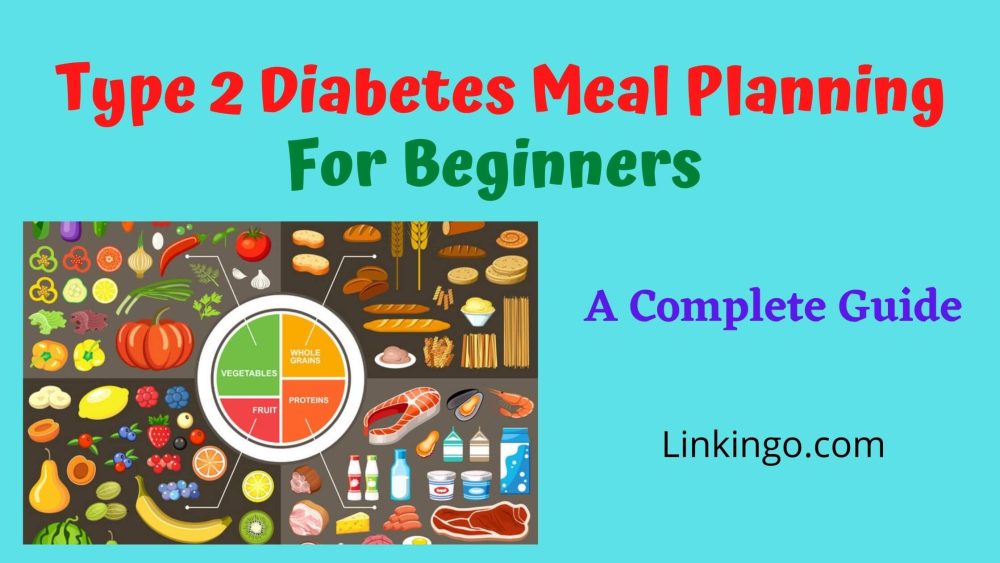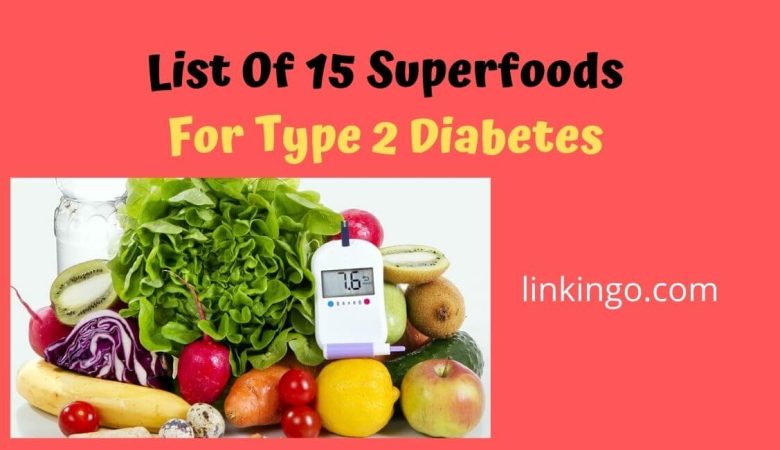As you are here in this article, perhaps you have been living with type 2 diabetes and are finding proper type 2 diabetes meal planning. Today, Linkingo is glad you are willing to make changes. Many people don’t even dare to kickstart because, after all, the idea of giving up all the foods they love seems so daunting.
Perhaps you, just like many diabetic patients out there, are imagining a diet plan with nothing but vegetables, apples, and plain water. But that’s not the case! A suitable type 2 diabetes meal planning isn’t as strict as you fear. In reality, the proper diet means you can still find joy in foods while managing your blood sugar level. In today’s post, Linkingo will provide you with all the components to form a diet plan that is nutritious, flavorful, and beneficial for your health.
Let’s start now, shall we?
Why Is Type 2 Diabetes Meal Planning Necessary?
As mentioned in our previous post, type 2 diabetes is characterized by insulin resistance. When this occurs, the body can’t make use of insulin hormones to use blood sugar (glucose) for energy. As a result, excess glucose accumulates in your blood at a higher rate than usual and puts your health at risk.
Therefore, adopting a healthy diet provides two critical benefits:
- Reduce blood sugar levels: Most diabetes symptoms come from high levels of blood sugar. In the long run, high blood sugar (or hyperglycemia) can lead to other serious complications such as nerve damage, kidney damage, or bone and joint problems. In the worst case, it will cause cardiovascular disease, the leading cause of death among people with diabetes. As you control your diet, you can manage your blood sugar levels, reverse type 2 diabetes symptoms, and save yourself from these complications.
- A healthier weight: According to surveys, 90% of diabetic patients are overweight. Scientists have proven that weight loss effectively prevents the progression of type 2 diabetes and prevents cardiovascular risk factors. That’s because it improves glycemia and boosts insulin sensitivity, restoring the body’s ability to transform blood glucose into energy. Moreover, as you lose weight, you can cut down a two – to – three-months average of blood sugar levels.
What Does A Diabetes Diet Involve?
Some of Linkingo’s readers assume that they can only have one meal a day if they want to follow a diabetes diet. In reality, this is not true. Unless you want to follow a particular meal plan like Intermittent Fasting, you should have three meals a day at regular times. It helps you better use the insulin that your body produces and prevents you from binge eating – a fatal mistake that most people who only have one meal a day fall for.
Instead of how many meals, the first thing you need to pay attention to is the number of calories. So, how many calories should you consume per day? The exact number is based on the amount and timing of food that assures you can keep your blood sugar stable and have enough energy to sustain. That number varies depending on the patient’s age, activity levels, frame size, current versus preferred weight, and other factors.
When the goal is a healthy weight and stable blood sugar levels, experts recommend a starting point of 1,400 to 1,600 calories per day for women and 2,000 to 2,200 calories per day for men. Recent research shows that a big breakfast followed by modest lunch and dinner shall make it easier to lose weight and achieve better blood sugar control.
The second thing diabetic patients need to be aware of while doing type 2 diabetes meal planning is nutrition that we will discuss right now.
Type 2 Diabetes Meal Planning – Recommended Nutrition.
Even when you manage to keep your calories in check, your effort would be wrecked if you don’t consume healthy foods. Below are some nutrition sources that are best for diabetics.
1. Healthy Carbohydrates.
We face another wrong mindset of many diabetics here: Having type 2 diabetes means avoiding carbs altogether. No, you can’t, and you don’t have to! We all need some carbs in our meals because it serves as the body’s primary energy source. They help fuel your brain, kidneys, heart muscles, and central nervous system. A carbohydrate-deficient diet will lead to headache, fatigue, weakness, difficulty concentrating, nausea, constipation, bad breath, and vitamin deficiency.
So, how do diabetic patients consume carbs? Scientists have proven that the quality of carbohydrates is more important than the amount you eat. The quality of carbs is determined using glycemic index (GI), glycemic load, fiber contents, and wholegrain. Generally, low GI carbs help maintain blood glucose levels. Some of the healthy carbs are:
- Fruits.
- Vegetables.
- Whole grains.
- Legumes.
- Low-fat dairy products, such as milk and cheese.
2. Foods Rich In Fiber.
There is no need to say about the benefits of fiber. For diabetic patients, fiber, especially soluble fiber, can slow sugar absorption and improve blood sugar levels. For that reason, a healthy diet that includes fiber can significantly reverse symptoms of type 2 diabetes.
Furthermore, foods that are high in fiber tend to be more filling than low-fiber ones. Hence they will keep you eating less and stay satisfied longer. Also, high-fiber foods take more time to eat and are often less “energy dense”. That means for the same volume of foods, and they have much fewer calories than other foods.
Some foods high in fiber include:
- Vegetables.
- Fruits.
- Nuts.
- Beans and peas.
3. Heart-Healthy Fish.
Type 2 diabetes comes with a high risk of heart disease. That is because one of its symptoms is high blood pressure, which puts a lot of strain on your heart. Hence, fish consumption is necessary as fish is a rich source of omega-3, which improves our hearts’ health.
Moreover, people with diabetes often have vitamin D deficiency. Including fish in type 2 diabetes meal planning also add to your vitamin D intake.
Experts recommend eating heart-healthy fish such as salmon, mackerel, tuna, or sardine twice a week. However, make sure to avoid fried fish or fish with a high mercury level, such as king mackerel.
4. Good Fats.
Statistics indicate that 65% of people with diabetes either have unusually high harmful cholesterol levels in their blood. Bad cholesterol is the result of consuming too much trans fat or saturated fat, which can be found in fast foods and packaged foods.
Meanwhile, researchers found that consuming monounsaturated fat or polyunsaturated fat could lower harmful cholesterol levels. Additionally, foods rich in those fats have positive effects on blood glucose control compared to other foods.
Some notable sources of good fat are:
- Avocado.
- Nuts.
- Canola, olive oils, peanut oils.
Most Recommended Diet For Type 2 Diabetes Meal Plan.
The three most recommended diets for diabetes are the Mediterranean diet, DASH diet, and intermittent fasting. Unlike other diet plans, which are designed only for the short term, these eating approaches focus on setting the foundation for building and maintaining lifelong habits.
1. Type 2 Diabetes Meal Planning – Mediterranean Diet.
When you search for the Mediterranean diet on the internet, you might discover a wide range of definitions. That’s because some principles of this diet vary by country and region. In general, though, it is high in vegetables, fruits, legumes, nuts, beans, cereals, grains, fish, and unsaturated fat such as olive oils. The Mediterranean diet usually includes a low intake of meat and dairy products.
For a long time, experts have proven many benefits this diet brings to our hearts. That’s important for diabetics because diabetes patients are up to four times more likely to die from heart disease compared to adults without diabetes.
If you want to try out the Mediterranean diet, you can start with these tips:
- Plan your meals around vegetables, beans, and whole grains.
- Eat fish at least twice a week.
- Use olive oil instead of butter while cooking.
- Serve fresh fruits for desserts.
Since this diet is very similar to the government’s healthy eating advice, you can also check out the EatWell Guide before adopting the Mediterranean diet.
2. Type 2 Diabetes Meal Planning – DASH Diet.
DASH stands for Dietary Approaches To Stop Hypertension. Just as the name implies, it was initially created to treat high blood pressure. Studies show that only 14 days of following the DASH diet can stabilize your blood pressure. Furthermore, this method also lowers bad cholesterol in the blood. Both are beneficial for diabetes patients since they are at risk of both hypertension and heart disease caused by bad cholesterol.
The DASH diet includes foods that are rich in potassium, calcium, and magnesium. It limits foods that are high in sodium, saturated fat, and added sugar.
This type of diet empathizes:
- Fresh fruits and vegetables.
- Low-fat dairy products.
- Whole grains.
- Some legumes, poultry, and fish.
- Small amounts of red meat, fats, and sweets.
Please note that if you have type 2 diabetes along with chronic kidney disease, the DASH diet might not be suitable for you. It promotes potassium and calcium, which kidney disease patients are recommended to cut down.
3. Type 2 Diabetes Diet Meal Plan – Intermittent Fasting.
Intermittent fasting (IF) doesn’t require you to change your foods but rather your mealtime. You either limit the time you eat to a certain number of hours per day or eat a very low number of calories on certain days. Many studies prove that IF is effective in promoting weight loss and is associated with fat mass loss. Aside from that, it also has beneficial effects on blood pressure and metabolism. Most importantly, after a period of fasting, insulin sensitivity is increased, and insulin levels decrease. That’s very important for diabetes patients.
There are many ways to start fasting, but among them, these two are the most popular:
- The 16/8 method: This method involves fasting every day for about 6 hours and restricts your daily eating window to approximately 8 hours. Usually, this means you will skip one meal.
- The 5:2 method: This method involves eating what you typically eat for 5 days of the week and restrict your calories intake to 500-600 for 2 days.
If you are on insulin or sulfonylurea, you must consult your doctor before adopting the intermittent fasting diet. The prolonged fasting time can lead to low blood sugar levels (hypoglycemia) if your level is already stable.
You may read more: Eat Stop Eat Review – Does Intermittent Fasting Really Work?
Tips For Getting Started With Type 2 Diabetes Diet.
There are a few tips for you to kickstart type 2 diabetes meal planning:
- Veg out: Add in one extra serving of non-starchy vegetables at your meals. After you are used to it, you can consider adding vegetables to your snack too,
- Beware of sauces and dressings: Sugar hides in many of these, like ketchup, barbecue sauce, and marinades. Always check the labels carefully and choose the lowest sugar option possible.
- Simplify beverages: Instead of sweetened drinks, opt for water, unsweetened tea, and coffee.
- Choose dairy products mindfully: Always opt for non-fat or low-fat milk, cottage cheese, and plain yogurt. Also, keep in mind that they are not only sources of protein but also of carbs. Don’t forget to factor them into your carb allotment.
Creating a proper meal plan has been challenging for many diabetes patients and their caretakers. It is not about what to eat, but what to eat to balance nutrition, keep blood sugar levels stable, and even satisfy their taste. “Between appetite and blood sugar level, I can only choose one”, a person with diabetes once told me. He added, “so, either I sacrifice enjoying delicious foods, or I risk my health to eat foods I love. That’s the inner struggle I have to face before each meal. Sounds like nothing, I know, but when it keeps happening every day, it feels very stressful”.
Do You Have The Same Struggle? There’s A Solution For You!
Would life be easier for you if you don’t have to think about meal planning any more?
What if you have a dietician who does everything for you and saves you from all the hardship of building your own diet and selecting foods?
Wouldn’t it be astonishing if the plan is not only beneficial for your health and helps you heal from diabetes permanently, but also flavorful and delicious?
In That Case, The Diabetes Freedom Will Serve As Your Personal Dietician!
There will not be any diabetes healing system like this on the internet. Diabetes Freedom is created by George Reilly – an actual type 2 diabetes patient who had miraculously healed from the condition through food tracking. He consulted his doctor, Dr. Freeman, who had spent half of his life researching type 2 diabetes. He decided to release this complete guide sharing the exact way how he treated the disease.

>>> Click Here To Get Access To The Program <<<
Having suffered from diabetes, George knows exactly what other patients are struggling with. Therefore, inside the system, you shall discover a complete meal preparation guide that laid out everything to kickstart your diabetes healing diet. This comprehensive guide covers from A to Z, from grocery lists, foods you should consume to daily menus with three meals and detailed recipes. It is genuinely a no-brainer as you won’t even have to think about what to eat the next day anymore. Even if you want to get creative, the guide is customizable according to your liking. It is the closest you can get to hiring a dietician that will help you reverse type 2 diabetes naturally and protect your health for a lifetime!
The meal preparation guide is not the only secret. There are many valuable tips to heal from type 2 diabetes hidden in Diabetes Freedom, waiting for you to discover. To know more about the system, check out Linkingo’s comprehensive review on Diabetes Freedom here! I’m sure you will find answers to all your questions in our review!
Type 2 Diabetes Meal Planning For Beginners – Conclusion.
Above, we have provided all the information you need to start type 2 diabetes meal planning. Linkingo hopes that after reading this post, you understand why diet is essential in your healing journey, what kind of foods you should prioritize, and get diet options.
Going on a diet for diabetes means that you will need to cut down on some of your favorite foods. However, it doesn’t mean you cannot enjoy delicious meals ever again. Next time, Linkingo will come back with a list of superfoods for diabetics that are both tasty and hearty, so please stay tuned!
Your support is our encouragement, so if you find this article helpful, please like and share! Don’t hesitate to leave a comment below if you have other suggestions.
We look forward to seeing you again.






Leave a Reply